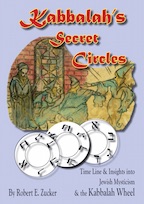Egyptian myths about golem like creatures
The rite of enchantment of the Egyptians are similar according to historian Ibn Khaldun (1332-78) when he described an enchantment he saw performed in Moslem Egypt. "We saw with our eyes one of these magicians fashion the image of the person he desired to bewitch. The images were composed of materials whose properties bear a certain relation to the intention and design of the operator and which represent symbolically, for the purpose of uniting and of separating, the names and characteristics of him who must be the victim. The sorcerer then pronounces a few words over the image which he places before him and offers the real or symbolic representation of the person it is sought to bewitch. Then he blows with his breath and ejects from his mouth a portion of his saliva which has collected there while at the same time he vibrates the organs which serve to enunciate the letters of the formula (similar to formulae found in Indian prana vide theory). He then holds, above the symbolic image, a cord which he has brought for the purpose, and ties a knot in it to signify that he is acting with resolution or persistence and that he is making a pact with the demon who was his associate in the operation at the moment he spat and also to show that he is acting with the firm intention of consolidating the charm. To these preceedings and the these words is attached an evil spirit who, enveloped in spittle, comes forth from the mouth of the operator. Several evil spirits then come down from it and the result is that the magician causes to drop towards his victim the knot that he wishes." Egyptian tales about bringing objects to lifeThe maker of statues who communicates the "breath of life" into a statue.Lucian, gives a story by Eucrates, in his dialog on lying, where Eu. relates how mere scraps of wood were to do all that the deceased could do in the underworld. The myth existsed in Greek times. "while I resided in Egypt, whither I was sent very young by my father for the purposes of study,... when we came to an inn, he would take the wooden bar of the door, or a broom, or the pestle of a mortor, put clothes on it, and speaking over it a magical formula, made it walk, and be taken by everybody for a man. The servent was to draw water for us, did the cooking, arranged the furniture, and showed itself in every respect an intelligent and active servant. then when Pancrates no longer needed it, by a second enchantment, it became a broom if it had been a broom, a pestle if it had been a pestle. One day hiding myself in a dark corner, I hard, unknown to him, the magic formula. It was a word of three syllables... The next day, when my Egyptian was occupied in the marketplace, I took the pestle, I dressed it, and pronounced the 3 magic syllables and ordered it to go and fetch water. It brought me an amphora full. "enogh," I said, "do not bring more water, become again a pestle." But it would not obey me, it continued bringing water, and filled the house. I knew not what to do. I feared Pancrates would be angry on his return, as he was when he did come home. I seized an axe and split the pestle in two. Immediately each piece of wood took an amphora and went to fill it with water, so that in place of one servant I had two. At this point Pancrates returned, guessed at once what happened, and turned again to wood my two water carriers, as they were before the enchantment. But some days afterwards he left me without knowing it, and I have not known since what has become of him." Read more about Shabti, Ushabtis. Return to Golem Home PageKabbalah's Secret CirclesLearn more about Kabbalah© 2001-2017 Robert Zucker. Entertainment Magazine EMOL.org All rights reserved. |
